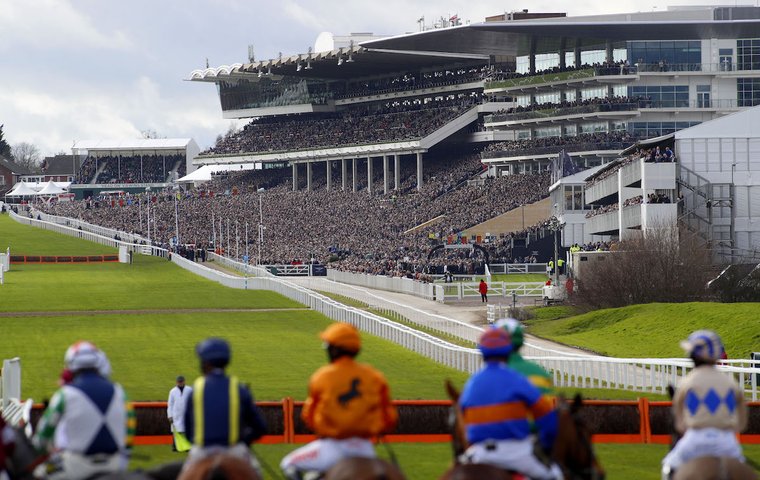
There is no meeting in the racing world quite like the four-day Cheltenham Festival, which kicks off on Tuesday in the Cotswolds. Steve Dennis examines what all the fuss is about.
GB: ‘What makes Cheltenham so great?’ is not so much a question searching for an answer as rather a statement that simply needs explanation, that prompts an almost inexhaustible laundry list of reasons rather than a hesitant acceptance of one or two strong points.
If these words appeared on an exam paper, preceding the dreaded instruction ‘Discuss’, the three hours provided would barely be enough.
When we say Cheltenham, we mean the Cheltenham Festival in mid-March, Tuesday to Friday, a four-day Godzilla of a race meeting that towers over the landscape like a California redwood over a bonsai farm. It is the undisputed global championship of jump racing; the Olympics plus the Super Bowl and the Breeders’ Cup, multiplied by the World Series and the NBA finals, raised to the power of the World Cup.Its year-round magnetism is absolute.
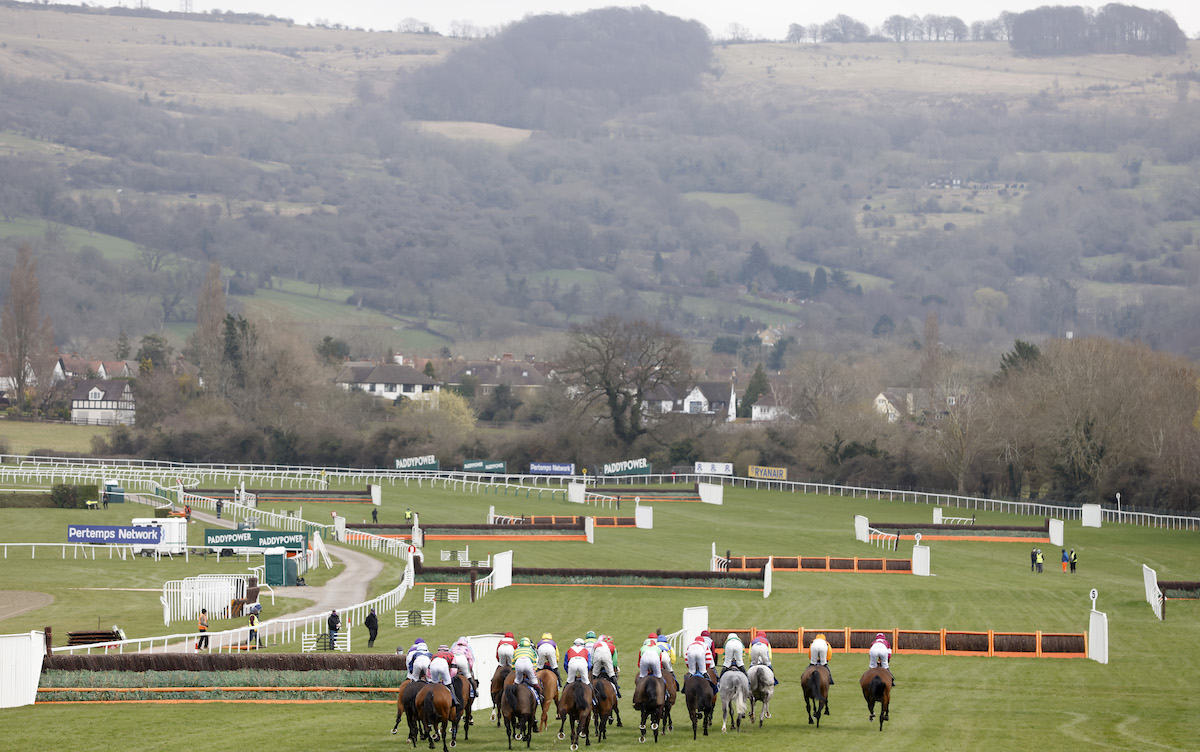
Every jurisdiction has its elite races, its important events, its season-defining moments, but at Cheltenham they all come at once, and the greatest of the races – the Champion Hurdle, the Queen Mother Champion Chase, the Stayers’ Hurdle, the Cheltenham Gold Cup – have attained mystical, magical properties in the collective experience.
Yet its status alone can’t explain the hold it has over the sport, the participants, the fans. So what makes Cheltenham so great?
“Everything,” says Donn McClean, garlanded Irish racing author and writer, and perhaps that’s all ye need to know. David Ashforth, multiple winner of Britain’s ‘Racing Journalist of the Year’ award, picks up the baton, expands on the topic.
Nothing like it in the world
“There’s nothing like it in the world,” he says. “There is a depth about people’s love of jump racing, its heroes, its memories, its cliffhanging excitements – and those depths inform every visit to Cheltenham.”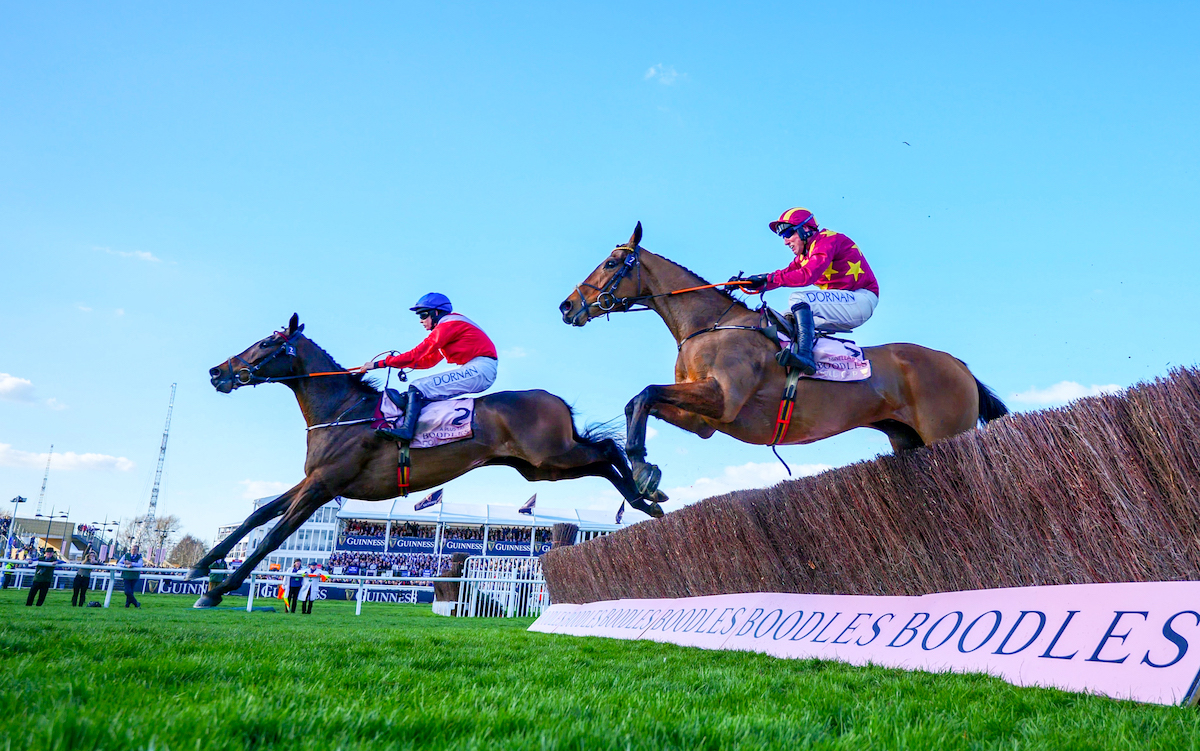
Jump racing speaks to the soul of the British and Irish in a way that the Flat scene, viewed as comparatively superficial, its leading practitioners less homely, less accessible, does not.
Jump racing is seen to epitomise bravery, endurance, longevity – heroism is not too far a stretch – and these qualities come to the fore at moments of high drama and passion, of which the Cheltenham Festival is lavishly blessed.
Such rare, elemental qualities deserve a magnificent setting, and Cheltenham provides that too. The town itself is unremarkable, provincial, without the heft or the beauty of, say, Saratoga or York, but the racecourse on its outskirts is a thing of wonder.
Set in a vast green bowl, this amphitheatre of dreams beneath the rugged outcrop of Cleeve Hill, with the rolling fields of Gloucestershire stretching away into the distance, has the power to provoke awe even in its quieter moments. An empty racecourse is an eerie place, full of shadows and ghosts, but Cheltenham retains its iconography even without a horse in sight.
“The first year I went to Cheltenham I arrived the night before, and made my way into the racecourse,” says McClean. “There was a moon, and from the grandstand I could see the final fence. The final fence at Cheltenham! That famous, legendary obstacle. It’s a moment I’ll never forget.”
But, as before, scenery is not enough on its own. It does, however, act as the perfect backdrop for the titans of the sport to thrill their eager audience, their performances entering into a legend that is burnished with every passing year.
An ecstasy of nostalgia
Mention of the names alone are enough to provoke an ecstasy of nostalgia, reference points to mark the passage of time, to pinpoint our younger selves. Just typing them is a shivery pleasure: Arkle and Golden Miller, Kauto Star and Denman, Istabraq and Moscow Flyer, Desert Orchid and Sprinter Sacre, Night Nurse and Dawn Run, Winter, Dickinson, O’Brien and Francome, Mullins, Molony, McCoy and Walsh.
“The present adds to the past, and the past to the present,” says Ashforth. Like the soft intonations of the Shipping Forecast on the radio, comfortingly familiar but at the same time mysterious and exotic, these names and many more like them form an incantation that keeps us happily spellbound. Of this list of communal favourites, everyone has their own sweetheart.
“The first ones I remember are from childhood, watching on TV, Monksfield and Sea Pigeon, Alverton and Tied Cottage,” says McClean, growing a little misty-eyed. “From an Irish perspective, we had so few winners in those days [late 1970s] that any horse with a chance was big news. They made memories that are still fresh.”
This shepherds us neatly into the racing rivalry between the British and Irish, which has been largely one-sided at any given point in time. In the 1980s and 1990s Ireland was the poor relation, but these days horses from the left-hand side of the Irish Sea dominate almost absolutely.
‘The Festival wouldn’t be the same without the Irish’
It doesn’t really matter who is in the ascendance, because racing isn’t a team sport and that list of great champions is evenly divided between the two nations. As long as the best take on the best, the flag they’re wrapped in is irrelevant, but the friendly, ribald rivalry adds salt and savour to the standing dish.
“The Festival wouldn’t be the same without the Irish,” says Ashforth, and it’s certainly true to say that the Festival wouldn’t be the same without Ireland’s glee at putting one (or 20) over on the Brits. From an Irish perspective, these four days are a challenge to be embraced with a bear-hug of fierce competition.
“I think there’s an extra special feeling about the Cheltenham Festival, as an Irish person growing up in the sport,” says Sally Ann Grassick, ITV Racing presenter and former amateur rider, who once competed in a charity race at the meeting.
“It was traditionally the time we brought our best horses over to show what we could do. Now I like to drive over the weekend before from Ireland, with the ferry packed with Irish horseboxes and stable staff. The buzz starts there and builds all the way. Monday morning is actually my favourite time of the week – the anticipation and excitement are palpable.”
The status, the scenery, the heroes, the rivalry. All vital factors in Cheltenham’s enduring majesty. Yet Grassick’s mention of the ‘buzz’ may yet get closer to the core of the situation. The buzz is not just bee-loud but, fuelled by the media, by its fanatics, by little more than the basic progression of events, it deafens, crashing over the world of jump racing like a 40ft wave.
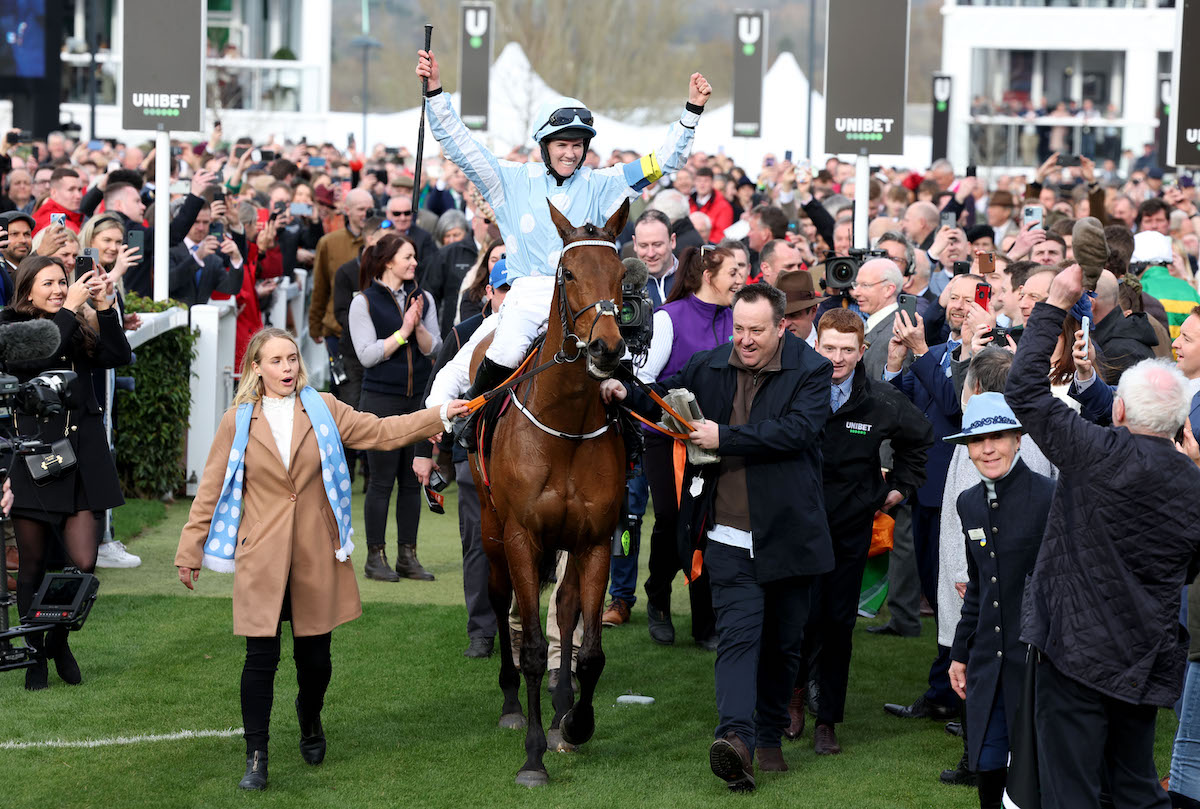 “There’s nothing to compare with the build-up to Cheltenham. It starts immediately after the first race of the meeting, when bookmakers offer odds about the winner for the following year’s Champion Hurdle,” says Ashforth, which sounds absurd but is factually correct.
“There’s nothing to compare with the build-up to Cheltenham. It starts immediately after the first race of the meeting, when bookmakers offer odds about the winner for the following year’s Champion Hurdle,” says Ashforth, which sounds absurd but is factually correct.
Scale of anticipation
“Everything funnels into Cheltenham, from October and November all the way to March – the Flat world doesn’t have that scale of anticipation,” adds McClean.
Sometimes that can be a problem, sometimes it can feel as though the big races of midwinter (and all the little ones) serve purely to pour fuel on Cheltenham’s eternal flame. It can be annoying when the focus falls so relentlessly on events three or four months hence rather than revelling in the moment, leading to justifiable criticism of the Festival’s monolithic dominance of the season, but no-one can deny the blissful effect of all that prolonged foreplay.
“If I’m not working, I love to take people down to the rails where the stable staff watch the races,” says Grassick. “The nervous excitement of the stable staff, the buzz of the crowd, the rush of the horses galloping by. That’s the real Cheltenham.”
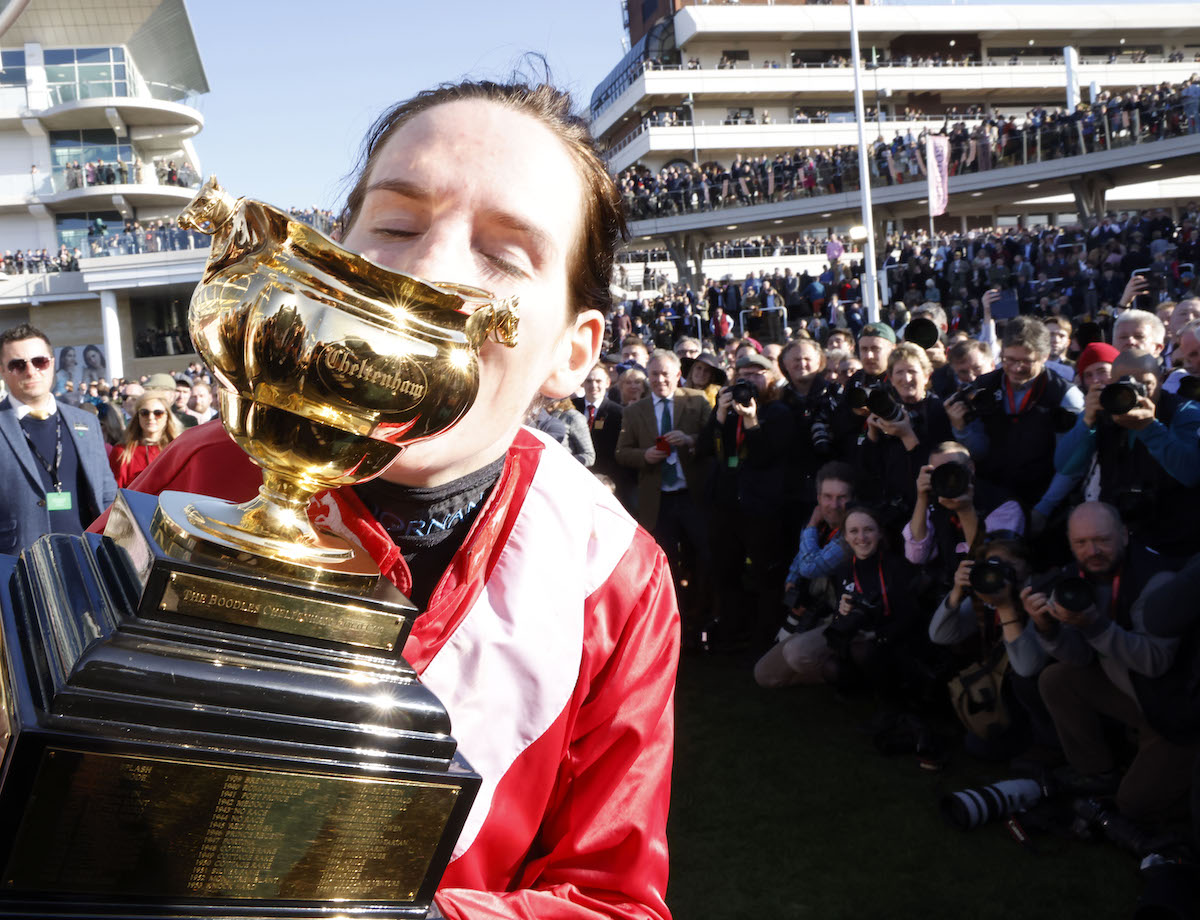 The buzz is integral, but it takes people to create that buzz. The Cheltenham Festival is a mighty convocation of worshippers, almost 70,000 on each afternoon – which brings its own problems – who arrive at the gates of the racecourse with their hearts already on their sleeves, beating wildly at the prospect of what is coming.
The buzz is integral, but it takes people to create that buzz. The Cheltenham Festival is a mighty convocation of worshippers, almost 70,000 on each afternoon – which brings its own problems – who arrive at the gates of the racecourse with their hearts already on their sleeves, beating wildly at the prospect of what is coming.
The Cheltenham Festival inspires an almost religious devotion in its followers. From Tuesday morning to Friday night the racecourse is a seething arena of camaraderie, of deep-rooted kinship, of a togetherness that perhaps has no equal in the racing world. Everyone is of the one mind, the one purpose.
“You meet at Cheltenham people who you haven’t seen for a whole year,” says McClean. “Same time, same place. That’s brilliant, isn’t it.”
Ashforth knows it too. “That’s a very enjoyable part of Cheltenham, where you bump into people you haven’t seen for a while, most of whom are in a good mood, because most people are during Cheltenham week. Everyone’s been looking forward to it, is excited to be there, and generally feels well disposed towards mankind.”
Turn to your neighbour, a total stranger a moment ago, and mention a name from the past – Danoli, Bula, Paul Carberry, David Nicholson, Golden Cygnet – and not only will there be a flash of recognition but a nerve touched and set a-tingle.
The exchange may very well lead to a new conversation, nuanced in the glories of the past and their connection to the present, moving onto Cheltenham stalwarts Willie Mullins and Nicky Henderson, the trainer responsible for this year's star attraction Constitution Hill, whose claims to greatness rest on an unbeaten streak of five wins over hurdles, none of them gained by fewer than 12 lengths.
Those claims will be cemented into the Cheltenham Festival songbook if he does the same in this year's Champion Hurdle, for which he is an overwhelming favourite.
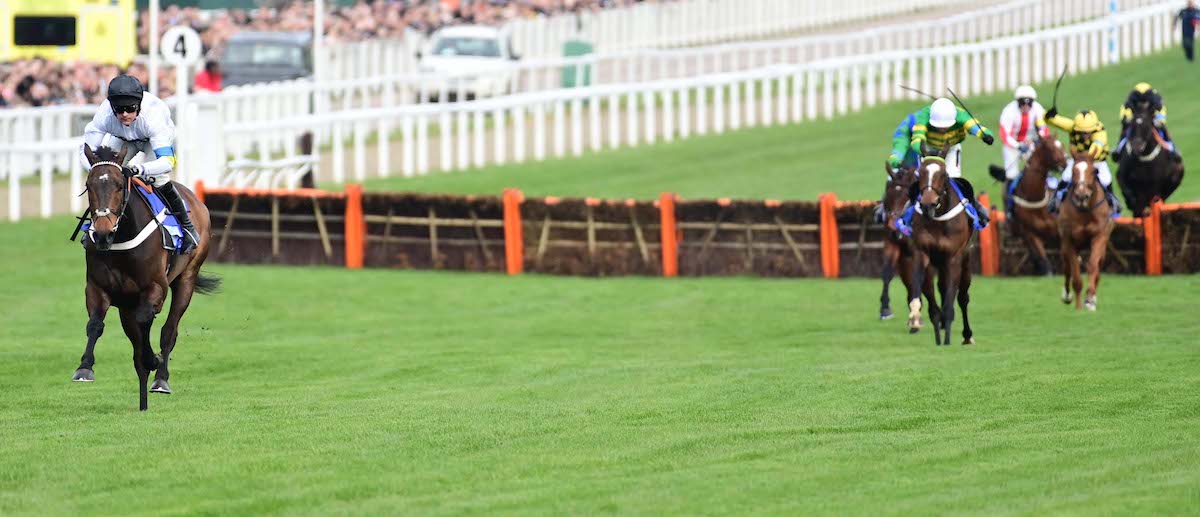 Everything at Cheltenham connects – the status, the rivalry, the past, the scenery, the buzz, the heroes, the present – and comes together in the spring, the time of eagerly awaited renewal.
Everything at Cheltenham connects – the status, the rivalry, the past, the scenery, the buzz, the heroes, the present – and comes together in the spring, the time of eagerly awaited renewal.
Perhaps it would be the same at a different time of year, but there is something about a crisp spring morning, freighted with its annual, atavistic promise, that lends the Cheltenham Festival an almost spiritual aspect. For that which we are about to receive, we are already truly thankful.
‘Cheltenham is ahead of everything, everywhere’
“For sustained excitement, through the year, before the meeting, during the meeting, Cheltenham is ahead of everything, everywhere,” says Ashforth.
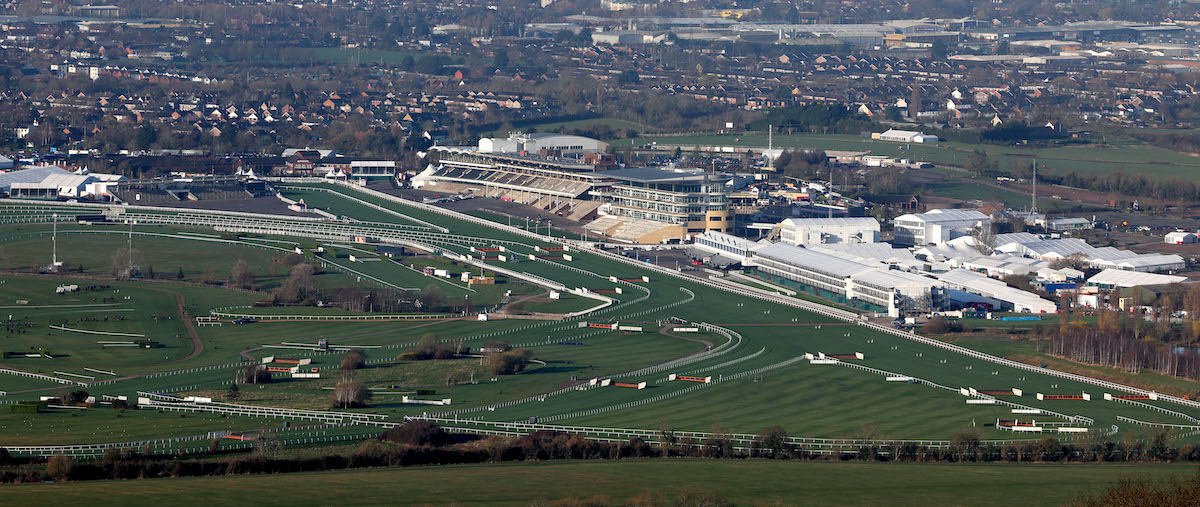 Grassick is of the same mind. “If you could bottle and sell the Cheltenham feeling, especially when a popular winner comes back through the crowds to the winner’s place, you’d be a millionaire.” Over to McClean. “It’s special, very special,” he says.
Grassick is of the same mind. “If you could bottle and sell the Cheltenham feeling, especially when a popular winner comes back through the crowds to the winner’s place, you’d be a millionaire.” Over to McClean. “It’s special, very special,” he says.
Of course, though, Cheltenham is not perfect. Nothing is. The vast crowds threaten to overwhelm the facilities – there are interminable queues in the bars, at the food stalls, for the toilets – some of the races are unworthy of the occasion, and others contrive to dilute the potency of the major events, which has been a vexing element ever since extra races were added to the programme when the traditional, much-loved three-day meeting was extended to a fourth day in 2005.
It is expensive, it is difficult to move around the concourses from grandstand to winner’s enclosure. It is not easy, but the struggle availeth in the most magnificent, memorable way.
The Cheltenham Festival is the sacred rite of spring, a shared explosion of long-deferred joy, a golden thread that binds us to the past and leads us into the future. It is great, in all senses of the word. And in an imperfect world, it comes as close to nirvana as most of us are ever likely to get.
• Visit the Jockey Club's Cheltenham website
‘In America, I spend most of my time pushing horses’ – Frankie Dettori in conversation
Special feature: America’s favorite racetrack – but just what is it that makes Saratoga so great?
Special feature: Where the turf meets the surf – but just what makes Del Mar so great?
View the latest TRC Global Rankings for horses / jockeys / trainers / sires


